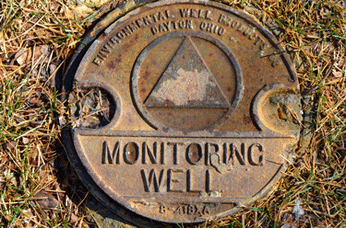Construction and completion of a groundwater monitoring well involves more planning than just the selection of the drilling method. The design and construction of the well must comply with regulatory standards to protect the aquifer and ensure groundwater data collected is representative of actual aquifer conditions.
What Considerations Are Necessary For Proper Well Construction?
What Considerations Are Necessary For Proper Well Construction?
- Information about the lithology is needed for selecting the proper filter pack, well casing, screen, and other materials needed to finish the project. For example, a monitoring well installed into a fine-grained, unconsolidated material needs to have the right filter pack to prevent sediment from entering the well.
- The casing and screen material used to construct the well can vary depending on its depth, grouting method, intended well use, and lithology. The deeper the well is, the heavier the wall casing needs to be. Heat generated from cement grout can damage PVC casing. Soil and groundwater chemistry can adversely affect well materials; highly acidic or alkaline conditions can damage steel casing. All well materials, need to be non-corrosive and non-reactive.
- A sieve analysis should be done for proper sizing of screen and filter pack material. The analysis determines how large the particle or grain size is at the screened interval within the formation. That particulate size determines how fine the sand particulates need to be in the filter pack. The filter pack grain size then dictates the screen size. The screen openings have to be appropriately sized to prevent filter sand and sediment from the formation from entering the well.
- Monitoring wells require an annular seal extending from the filter pack to the surface. This seal prevents infiltration of surface water and groundwater from other water bearing zones. Typical sealing materials include bentonite chips or pellets, cement, and bentonite grout.
- Surface completion can be accomplished typically in two different ways. The wellhead, or top of casing,can end just below ground-level or extend above ground.
- In both cases, the well casing is topped with a waterproof locking cap. In above ground installations, the exposed casing is covered with a protective sleeve, typically steel or aluminum. For at-ground installations, the top of the well is encased in a watertight road box. The surrounding area is graded to prevent water from settling at the wellhead.
Contact Talon/LPE for assistance with your next groundwater monitoring project We install monitoring wells and provide other environmental drilling services throughout Texas, Oklahoma and New Mexico.


